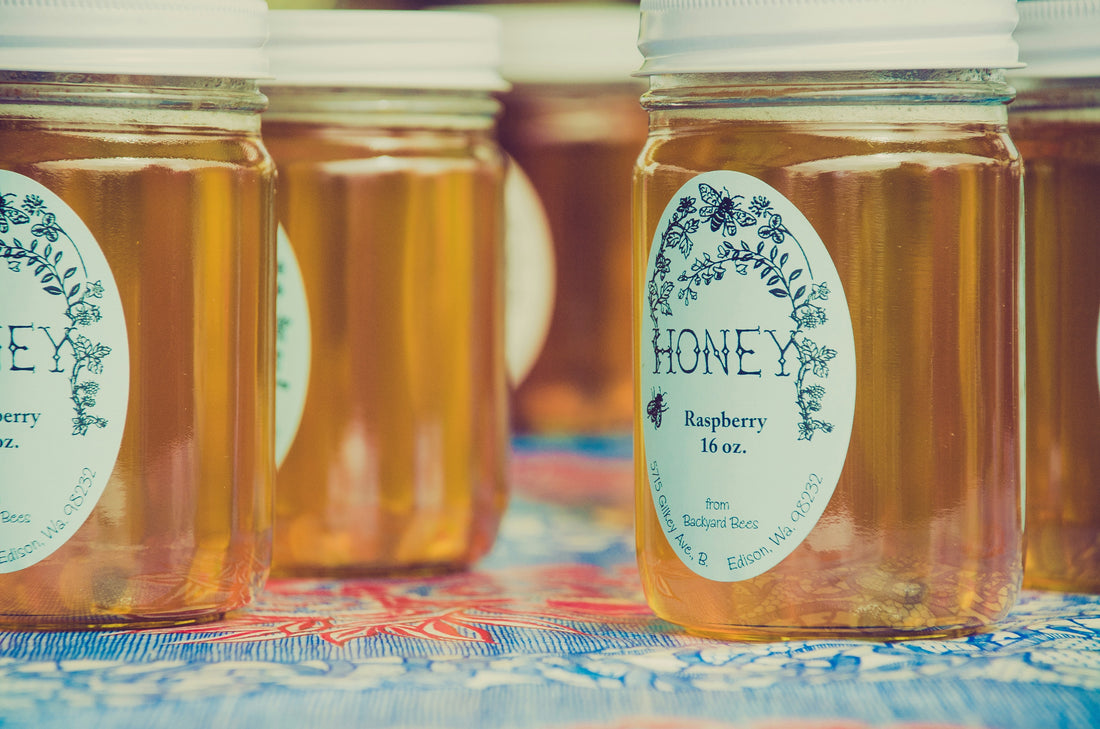Ever browsed the honey aisle in the UK and noticed something unusual? Unlike other countries, you likely won't see jars proudly displaying the label "raw honey." This can be confusing for those familiar with the term and its association with pure, unprocessed honey. So, why the difference?
Why we don’t use “raw” for honey
The truth is, things get a little complicated when it comes to honey labeling in the UK. Thanks to regulations and clear definitions, the term "raw" isn't strictly regulated.
It's a bit like the term "unpasteurized" in milk production. In the US, there are clear rules about what "unpasteurized" means for milk, but in the UK, "raw honey" doesn't have one specific definition. It's like a recipe with a few different versions floating around. Some might say "raw honey" means it hasn't been heated above the temperature of a beehive, while others might say it means it hasn't been processed with heat at all.
Take, for example, a beekeeper selling honey at a local farmers market. They might advertise their honey as "raw," but there's no guarantee what processing methods they actually used. At the same time the honey in supermarket shelves can be advertised as raw. This lack of a single definition can be confusing for consumers, unsure of what "raw" truly means.
Most honey in the UK undergoes some level of processing, even if it's minimal. Most producers filter their honey, by simply removing any unwanted bits like bee parts or leftover beeswax. It's a common practice to ensure a smooth, appealing product on the shelf.
Now, some might argue that even minimal filtering takes away from the "raw" nature of honey. But here's the catch: some minimal heating is also quite common. Honey naturally crystallizes over time, and gentle warming helps keep it smooth and spreadable. The key is that this heating is usually very mild, well below temperatures which would damage the beneficial enzymes and nutrients in honey.
What to look for instead of “raw” honey
So, if "raw" isn't officially used in the UK, what should you look for instead? Here's the good news: plenty of fantastic, high-quality honey is available. Focus on these key points:
Unfiltered: This means the honey hasn't had any bits and pieces removed beyond what a fine mesh sieve might catch. This can leave a bit of a cloudy appearance, but it also means you get all the natural goodness, including pollen, which is believed to offer additional health benefits.
Unheated: Look for honey that hasn't been significantly heated. Ideally, the process should only involve gentle warming to prevent crystallization, not high temperatures that can affect the honey's natural properties.
Pure and Natural: This simply means the honey doesn't have any added sugars, artificial sweeteners, or other unwanted ingredients. You want honey that's just honey, the way nature intended.
By focusing on these aspects, you can find fantastic UK honey that delivers the same benefits as "raw" honey elsewhere. Think of it like this: skipping the "raw" label doesn't mean sacrificing quality. Instead, it empowers you to become a honey detective, reading labels and choosing products that meet your definition of pure and natural.
Remember, honey producers in the UK are passionate about their craft. Many small-scale beekeepers prioritize sustainable practices and produce honey harvested with care. So, while you might not see the "raw" label, that doesn't mean you can't find exceptional honey that's a perfect addition to your pantry.

